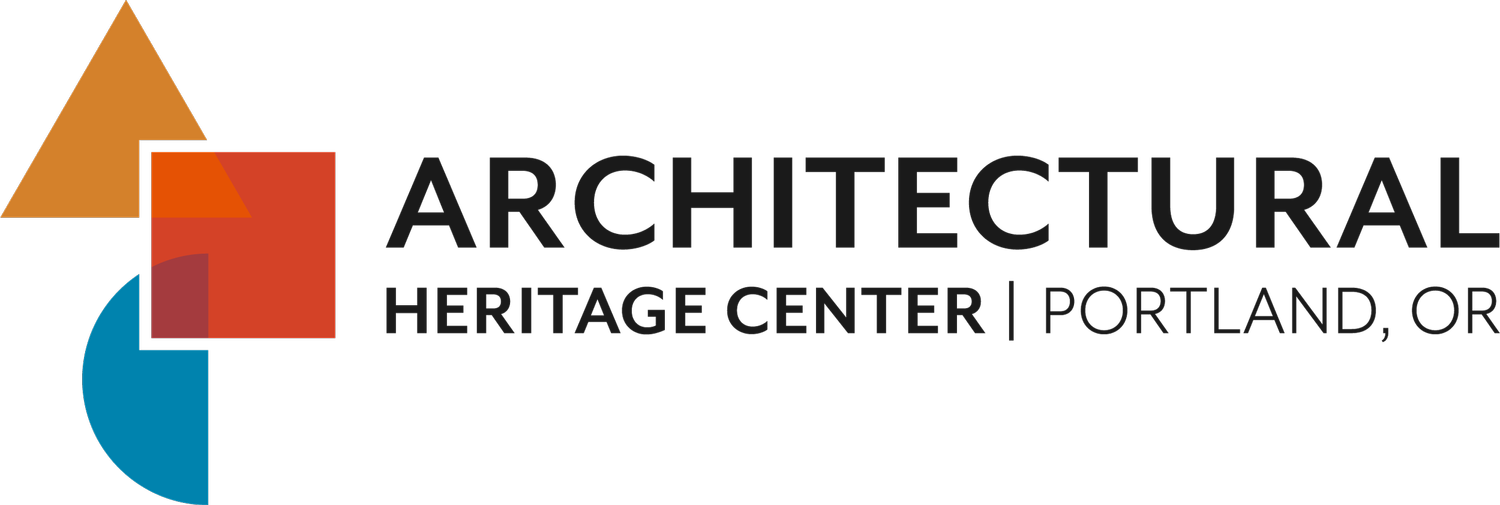2024 ARCHITECTURAL HERITAGE CENTER CANDIDATE SURVEY RESPONSES
Mariah Hudson Candidate for City Council in District 2
LIVABILITY: Stewardship of Portland’s built environment is a key quality of life issue. The preservation and reuse of existing buildings is an important component of sustainable development and helps to maintain strong, livable communities.
Q1
Agree: [No comment]
ADAPTIVE REUSE: Do you think the conversion of empty or underused commercial buildings (e.g., offices or warehouses) into new uses can advance two important objectives:
a. alleviate Portland’s affordable housing shortage;
b. help to revitalize the city’s downtown.
Q2
Agree: [No comment]
SUSTAINABILITY & CLIMATE: Building reuse, instead of demolition and replacement, equates to taking thousands of cars off the road (EcoNorthwest Study). Promoting reuse should be an important component of achieving Portland’s sustainability goals.
Q3
Agree: When structurally / financially possible. As a former sustainability officer for a large organization I'm aware preservation can be more sustainable. Basic weatherization and energy upgrades should be a priority.
FINANCIAL INCENTIVES: To make building conversion and reuse economically feasible, many believe we need better financial tools, such as a state rehabilitation tax credit – a tool used by 39 other states. Would you support making that a priority on the City’s legislative agenda?
Q4
Yes: I would consider this particularly with support from the state to incentivize conversions. The city can aid conversions with TIFs and zoning changes, for example along the Green Loop for Housing.
DEVELOPMENT IMPACTS: We need more affordable housing. However, proposed zoning changes (e.g.significant increases to building height and scale) can incentivize demolition, displacement, gentrification, and erasure of cultural heritage. How concerned are you about these potential negative consequences?
Q5
Somewhat concerned: Yes, this is a concern AND there are other tools besides zoning (restrictions) that can aid preservation, historic designation for example.
PLANNING KNOWLEDGE: How familiar are you with Portland’s Comprehensive Plan, zoning codes, land use regulations, and current policies for historic properties?
Q6
Extremely familiar: I live in a historic district, have served on a land use committee and neighborhood association, and am the former chair of the Northeast Coalition of Neighborhoods where I led engagement efforts on the Residential Infill Plan for example.
INFILL DEVELOPMENT: In Portland’s historic areas, it’s important that new infill construction fit with surrounding context and retain the districts’ unique qualities and identity.
Q7
Agree: Fit in a neighborhood is more than just setbacks and height. It's also about scale and features like depth of eaves. I also see the need to allow things like solar on historic homes and ADUs to help make our communities more sustainable, allow people to age in place and meet the needs of future generations.
CONSERVATION OF PORTLAND “MAIN STREETS”: Portland’s unique identity is due in large part to its many distinct and diverse neighborhoods and “streetcar-era main streets.” Many were the original main street when these areas were separate cities before being annexed into the larger City of Portland. Recent rezoning, increased height limits and no historic protections make these areas vulnerable to demolition. Would you support the creation of mini-Conservation Districts (typically 1 or more blocks) to help retain these iconic commercial main street centers?
(For Reference: Conservation Districts have greater flexibility than Historic Districts given that they still allow for growth and change but can support more context-sensitive development. New Conservation Districts would have demolition review for contributing resources, objective design standards, and the height limit of the zone).
Q8
Yes: I would certainly consider this policy. I love historic buildings. I would want to understand the implications for property owners and additional fees that often come with historic type reviews etc.
TOURISM: Historic buildings and public spaces are a significant economic asset as a major attraction for tourism. What priority should this be given when planning and setting policy?
Q9
Medium: [No comment]
BONUS: Tell us your favorite building, neighborhood, or place in Portland.
Q10
RESPONSE: My century home in the Irvington / Alameda overlap.





